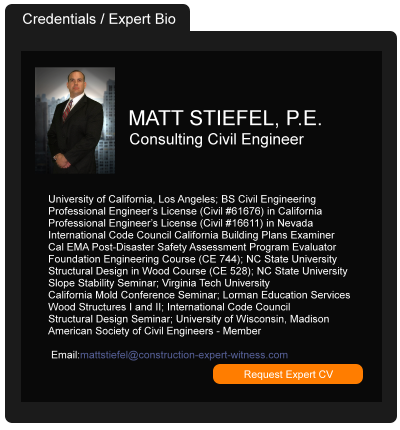US Secretary of Labor Withdraws Guidance Regarding Independent Contractors
June 21, 2017 —
Tanya Salgado - White and Williams LLPThe United States Secretary of Labor has withdrawn an informal guidance regarding independent contractors issued in 2015. We reported on the 2015 Administrator’s Interpretation here. The 2015 Interpretation provided a detailed explanation of the economic realities test, which is used to determine whether a worker is to be classified as an independent contractor or an employee under the Fair Labor Standards Act (FLSA).
While the 2015 Interpretation did not change existing case law on independent contractor status, it was seen as sending a signal from the Department of Labor (DOL) regarding the agency’s focus. The DOL concluded the 2015 Interpretation with the statement, “most workers are employees under the FLSA’s broad definitions…” Just as the DOL’s 2015 Interpretation did not change existing case law, the DOL’s withdrawal of the Interpretation does not change the law in any way. The economic realities test remains the legal standard for determining independent contractor status under the FLSA.
Read the court decisionRead the full story...Reprinted courtesy of
Tanya Salgado, White and Williams LLPMs. Salgado may be contacted at
salgadot@whiteandwilliams.com
PSA: Latest Updates from AGC-VA on COVID Rules (UPDATED)
June 14, 2021 —
Christopher G. Hill - Construction Law MusingsThe recent changes in masking requirements and COVID-related restrictions have prompted questions and concerns throughout the construction industry. We understand your questions and continue to work closely with the Department of Labor and Industry (DOLI) and the Safety and Health Codes Board.
Here is what we know at this point:
- The Governor’s second order terminates the state of public emergency as of May 28, 2021. At that point, the DOLI Safety and Health Codes Board will have 2 weeks to meet and decide whether to rescind, modify, or continue the Final Permanent Standard for Prevention of Covid-19. Companies should continue to follow the standard until further notice.
- UPDATE: At present, the emergency order does not expire before June 30, unless amended or otherwise changed. Therefore, the two-week period to announce a meeting of the SCHB to review the permanent COVID-19 standard does not begin until July 1, though the meeting can occur after the two-week period. AGCVA has joined other groups in pushing for a meeting as soon as possible.
Read the court decisionRead the full story...Reprinted courtesy of
The Law Office of Christopher G. HillMr. Hill may be contacted at
chrisghill@constructionlawva.com
Safe Commercial Asbestos-Removal Practices
April 18, 2023 —
Emily Newton - Construction ExecutiveContractors must proceed with caution to safely remove asbestos and protect employees and commercial buildings. Only contractors licensed by the Environmental Protection Agency (EPA) in abatement should dispose of it, because the best asbestos-removal practices require high degrees of care and safety.
Asbestos is a stealthy material, quickly becoming airborne and contaminating other areas of the building and humans. No matter a contractor's tenure in the field, it's vital to remember the top practices in the industry as people learn more about elusive, toxic asbestos-containing materials (ACMs).
Wait for Technician and Inspector Feedback
It’s important to find out if a jobsite contains asbestos. Proceed with caution if the structure was built before the 1990s. The removal process shouldn't start immediately if a business suspects asbestos and reaches out to a company. Inspectors scope the situation and grab samples for lab testing to determine how abaters should handle the case. They will need to know every potential hiding place for the asbestos, analyzing everything from caulking to wiring for asbestos coatings and other variants of the substance. This may take time, but commercial contractors must wait until they receive this information before proceeding.
Reprinted courtesy of
Emily Newton, Construction Executive, a publication of Associated Builders and Contractors. All rights reserved.
Read the court decisionRead the full story...Reprinted courtesy of
What You Need to Know About Additional Insured Endorsements
August 30, 2017 —
Gary Barrera - California Construction Law BlogA well-drafted insurance clause is an integral part of a construction contract because it sets forth a subcontractor’s obligations to add the general contractor to its policies of insurance as an additional insured and identifies the manner by which the general contractor will qualify as an additional insured. In a typical construction contract, the general contractor will be an additional insured via a scheduled endorsement or a blanket endorsement.
Scheduled Endorsements
A scheduled endorsement contains a “schedule” in which the person or organization that is named in the schedule is added to the policy as an additional insured. The following scheduled endorsements are commonly used in construction contracts.
Read the court decisionRead the full story...Reprinted courtesy of
Gary Barrera, Wendel Rosen Black & Dean LLPMr. Barrera may be contacted at
gbarrera@wendel.com
Yellen Has Scant Power to Relieve U.S. Housing Slowdown
June 11, 2014 —
Rich Miller and Victoria Stilwell - BloombergThe hesitant housing recovery has surprised and concerned Federal Reserve Chair Janet Yellen and her colleagues at the central bank. It’s not clear how much they can do about it.
While the industry is rebounding from a weather-ravaged first quarter, the pickup will probably fall short of previous projections, according to economists at Goldman Sachs Group Inc. of New York and Macroeconomic Advisers LLC in St. Louis. As a result, they trimmed their forecasts for economic growth in the second half of 2014 to about 3.25 percent from 3.5 percent.
“Housing is a growing worry,” said Macroeconomic Advisers’ senior economist Ben Herzon.
Mr. Miller may be contacted at rmiller28@bloomberg.net; Ms. Stilwell may be contacted at vstilwell1@bloomberg.net
Read the court decisionRead the full story...Reprinted courtesy of
Rich Miller and Victoria Stilwell, Bloomberg
Nevada Senate Minority Leader Gets Construction Defect Bill to Committee
April 03, 2013 —
CDJ STAFFThe Las Vegas Sun reports that Michael Roberson, the lead Republican in the Nevada Senate, managed to get his construction defect reform bill scheduled for a hearing. Previously, the Senate Democrats had determined that all bills pertaining to construction defect legislation would be heard by the Senate Judiciary Committee. However, Roberson managed to convince Kelvin Atkinson, the chair of the Senate Commerce and Labor Committee, to add his bill to the text a mortgage lending measure under consideration by that committee.
Roberson had previously submitted his bill to the Judiciary Committee. Senator Tick Segerblom has not scheduled the bill for a hearing and is reported to be an opponent of the bill. While Roberson characterizes the bill as making things better for homebuilders, Segerblom sees it as making things worse for homeowners. “That’s not going to happen,” Seberblom told the Las Vegas Sun.
Although the senate voted to send the bill to the Commerce and Labor committee, it still may not get a hearing. Segerblom said he did not know if the bill would be heard in his committee. “We’ve got 60 or more bills to hear and if there’s nothing new in there to change the world, I don’t know why we would hear it.” Atkinson said he has “no appetite to hear the bill.”
Read the court decisionRead the full story...Reprinted courtesy of
Hunton Insurance Recovery Partner Michael Levine Quoted on Why Courts Must Consider the Science of COVID-19
March 15, 2021 —
Latosha M. Ellis & Matt Revis - Hunton Insurance Recovery BlogOne year into the COVID-19 pandemic, courts have issued hundreds of rulings in COVID-19 business interruption lawsuits, many favoring insurers. Yet those pro-insurer rulings are not based on evidence, much less expert opinion evidence. For insurers, ignorance is bliss.
Despite early numbers in federal courts favoring insurers (state court decisions actually favor policyholders), the year ahead holds promise for policyholders. Fundamental science is the key. Indeed, as researchers continue to broaden their knowledge about COVID-19, it has become increasingly clear that scientific evidence supports coverage for policyholders’ claims.
Reprinted courtesy of
Latosha M. Ellis, Hunton Andrews Kurth and
Matt Revis, Hunton Andrews Kurth
Ms. Ellis may be contacted at lellis@HuntonAK.com
Read the court decisionRead the full story...Reprinted courtesy of
Despite Misapplying California Law, Federal Court Acknowledges Virus May Cause Physical Alteration to Property
October 26, 2020 —
Scott P. DeVries, Michael S. Levine & Michael L. Huggins - Hunton Insurance Recovery BlogOn August 28, Judge Stephen V. Wilson of the Central District of California, entered the latest ruling in the ongoing saga of the COVID-19 business interruption coverage dispute between celebrity plaintiff’s attorney Mark Geragos and Insurer Travelers.
The case, 10E, LLC v. The Travelers Indemnity Co. of Connecticut, was filed in state court. Travelers removed to federal court, where Geragos sought remand and Travelers moved to dismiss. Judge Wilson denied remand and granted the Motion to Dismiss, finding plaintiff did not satisfactorily allege the actual presence of COVID-19 on insured property or physical damage to its property. This holding is inconsistent with long standing principles of California insurance law and appears to improperly enhance the minimal pleading threshold under Ashcroft v. Iqbal, 556 U.S. 662, 678 (2009) (To survive a motion to dismiss, a complaint need only allege a claim “that is plausible on its face.”).
After rejecting Geragos’ attempt to have the case remanded based on a finding that Geragos had fraudulently joined a defendant to avoid removal, the Judge proceeded to the Motion to Dismiss which raised three issues: (1) the effect of the Virus Exclusion in the Travelers’ Policy, (2) whether plaintiff failed to allege that the governmental orders prohibited access to its property, and (3) whether plaintiff could “‘plausibly allege that it suffered ‘direct physical loss or damage to property’ as required for civil authority coverage.’” Rather than address the effect of the exclusion, which would be the narrowest issue (this exclusion is not present in all policies), the Court proceeded directly to the third issue, which has the broadest potential application.
Reprinted courtesy of
Scott P. DeVries, Hunton Andrews Kurth,
Michael S. Levine, Hunton Andrews Kurth and
Michael L. Huggins, Hunton Andrews Kurth
Mr. DeVries may be contacted at sdevries@HuntonAK.com
Mr. Levine may be contacted at mlevine@HuntonAK.com
Mr. Huggins may be contacted at mhuggins@HuntonAK.com
Read the court decisionRead the full story...Reprinted courtesy of


































































